When I first stumbled upon tree branch blocks online, I was shocked by two things: how beautifully natural and fun they would be to play with and how super ridiculous the price was.
Those two facts, coupled with being a DIY homesteader and homemade toy-making fiend, prompted me to go “shopping” in our woods for some branches to use.
Initially, I was just going to make branch blocks for the grandkiddos’ playroom at our house and for presents for other young family members, but then I also found branch memory matching sets – priced equally outlandish.
I already had some small wood slices (these are often referred to as ‘cookies’ in produce listings) to use to make stairs for planned branch and wood treehouses I am going to make.
They were the perfect dimension to use to make memory-matching games like I had seen online.
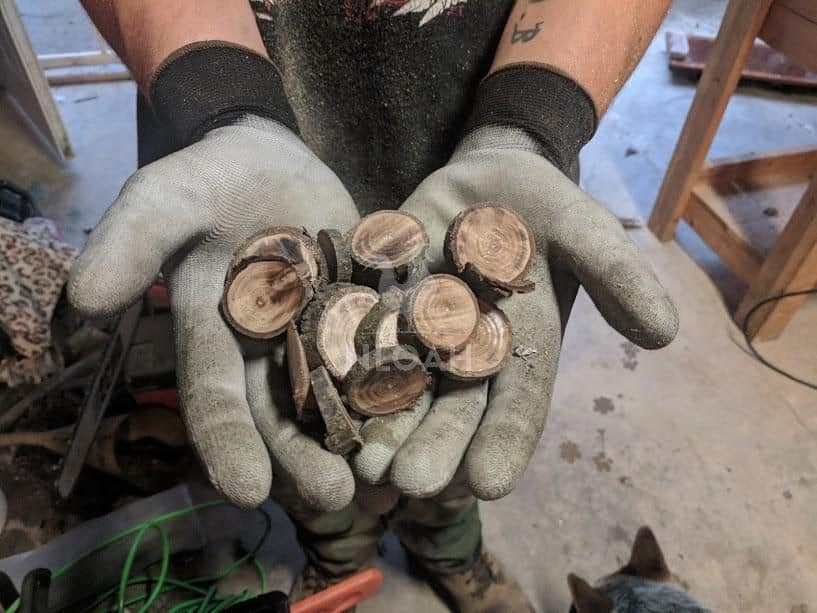
Instead of just making memory games for the younger children who are being educated in a combination of Waldorf and Charlotte Mason philosophies, I decided to make match and spelling practice sets for older children in our tribe as well.
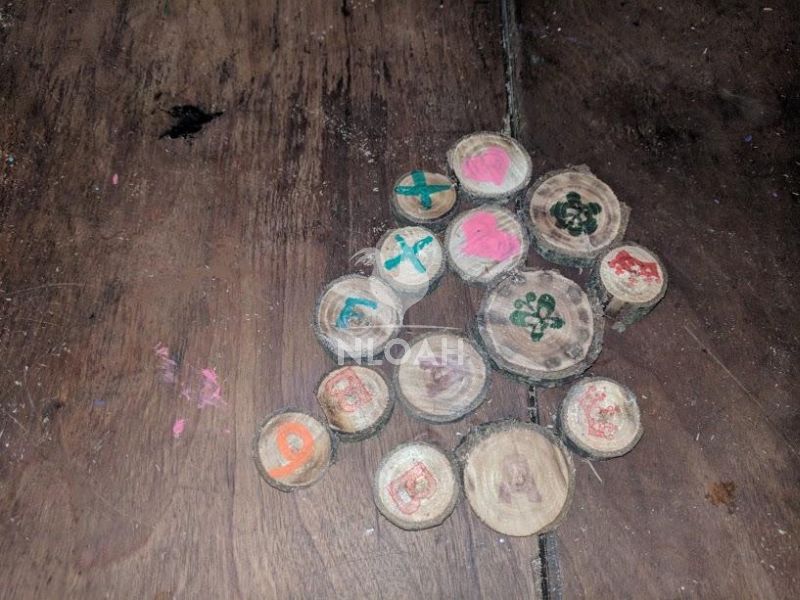
Project Supplies List
- Branches of different lengths and widths – Branches should be cut and dried for at least a couple of weeks before cutting them to use in branch blocks or for use in the DIY Waldorf memory matching or learning game. I used inexpensive acrylic craft paint, cheap self-inking and inkpad stamp sets, and paint pens, to make these branch slice learning manipulatives.
- Mineral oil – optional
- Sandpaper to remove rough edges
- Knife or planer to debark the the blocks and slices – also optional
- Saw – we used a compact miter (or chop) saw on this project. Some folks who make branch blocks have used a scroll saw for branches that are 1 inch in diameter or thinner,, a handsaw and a vise, or a bandsaw.
How To Make Waldorf Branch Blocks And Game Pieces
Wipe away any debris or loose bark from the branches. Now’s the time to decide if you want to remove the bark from any or all of the tree branch blocks and wood slices.
It is far easier to remove the bark with a planer before cutting the branches into smaller pieces – not impossible, but most definitely a whole lot easier and quicker.
You can measure and mark the branches at places you want to cut, use the measuring guide on the compact miter saw, or simply “eyeball” the measurements and use a knife to create and indentation to serve as a guide.
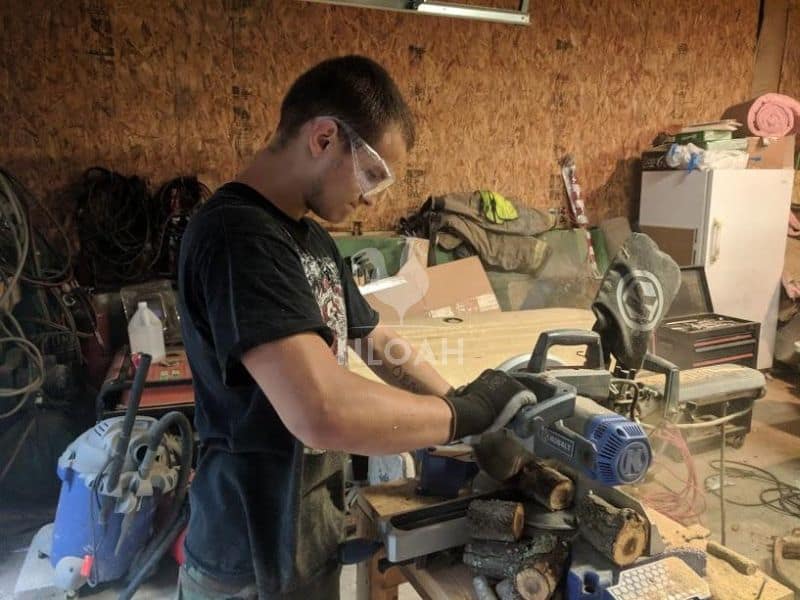
Cutting pieces smaller than two inches can be dangerous when working with a miter saw or other power tool – especially if the pieces are narrow in diameter.
Small slices can be done on a miter saw, we did it without injury, but just do so with caution and only if you have experience working with power saws.
Once you have all of your pieces cut, sand away any rough edges using a piece of sandpaper or a sanding attachment on a power drill.
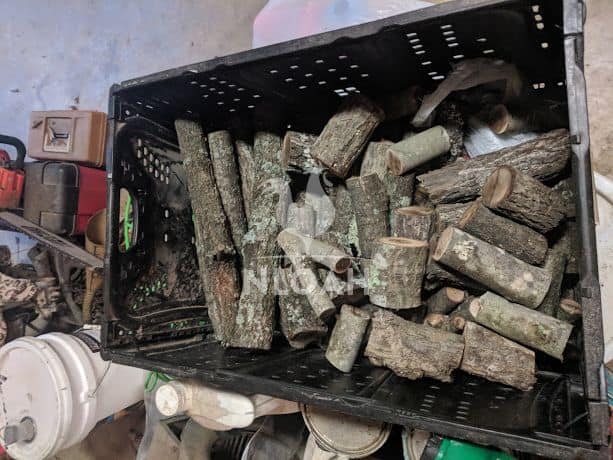
Waldorf Branch Block Sets Explored
That is really all there is to making the natural tree branch blocks. See why I said the prices the sets of Waldorf inspired blocks are selling for online are completely crazy?
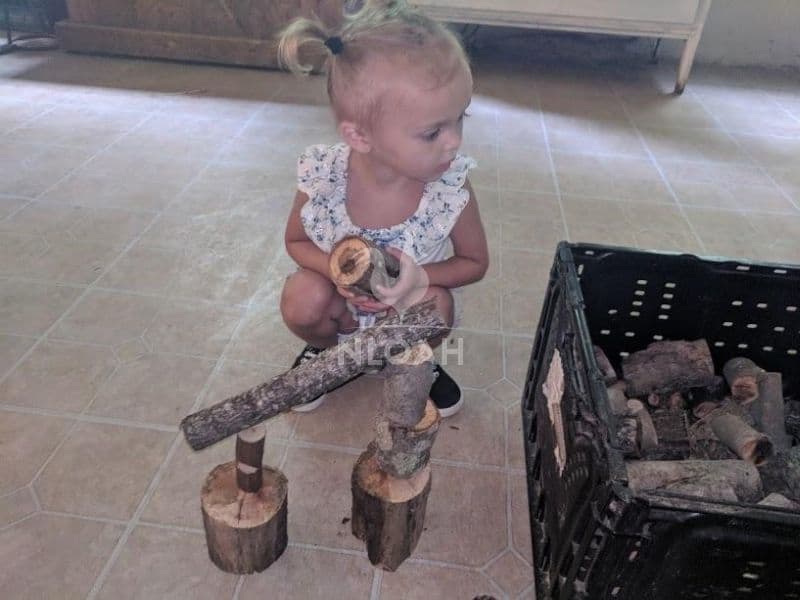
Audriella (Auddie) and her big brother Colt ran straight to the crate of branch blocks as soon as the walked through the door for a visit.
They used them to build towers, a house for their Playmobil little people, and to build a forest next to Colt’s castle for their horses to play in.
How To Make Charlotte Mason Inspired And Waldorf Memory Matching Games:
How To Adorn, Sand, And De-Bark The Small Wood Slices:
The fun learning options for the small wood slices are nearly endless. You could create alphabet sets, numbers sets, symbols sets, colors sets, matching sets, and so on.
The children can learn about what type of tree their cool new natural Charlotte Mason style toy came from and all the uses for the tree while playing and building structures.
If you are unfamiliar with the Waldorf and Charlotte Mason methods and homeschool your children (or might be planning to) there is an abundance of information and curriculum plans, free of charge, available online.
Both styles of teaching and open-ended imaginative play are often blended together to focus on a whole child approach to adventurous learning.
Whole child might sound a bit too “new age,” but it really isn’t. Basically, at least in this learning scenario, it focuses not just on academics, but on character development, child-guided exploration, and simplicity.
The Reggio Emilia teaching philosophy also can go hand-in-hand with both the Charlotte Mason and Waldorf styles of learning and play.
Children who are taught or raised based even loosely on any combination of these philosophies will definitely not be over-stimulated by an abundance of either manufactured toys or electronics.
These lucky kiddos get to get messy and spend a lot of time outdoors during their homeschool day or on the evenings and weekends with their parents.
All three styles of educating and raising children use everyday experiences as an opportunity to learn, be it cooking, tending to animals, or going for a walk in the woods.
Having trouble making tree branch blocks or the small slices for educational games? Leave a note in the comment section below and I will do my best to help you on your homemade toy project.
If you’ve made these blocks before and have tips to share with the New Life On A Homestead community, please do so in the comments sections as well.
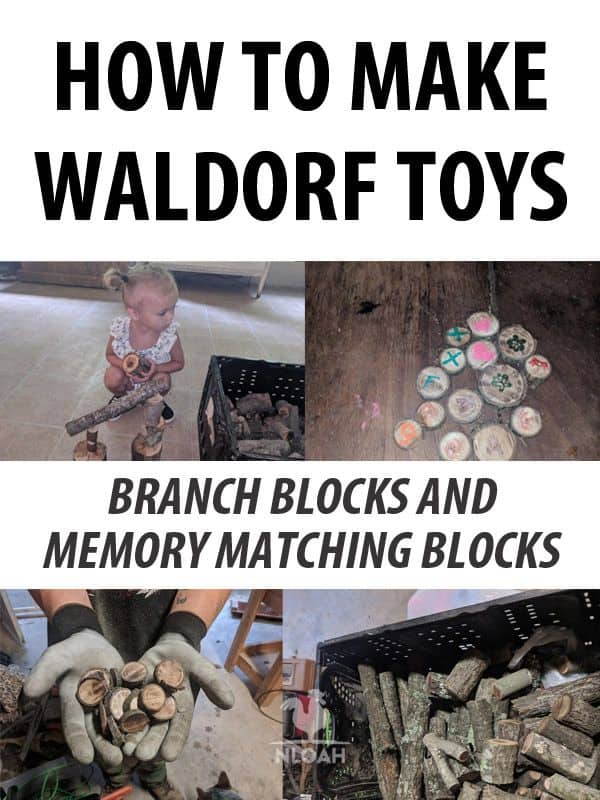

Tara lives on a 56 acres farm in the Appalachian Mountains, where she faces homesteading and farming challenges every single day, raising chickens, goats, horses, and tons of vegetables. She’s an expert in all sorts of homesteading skills such as hide tanning, doll making, tree tapping, and many more.
